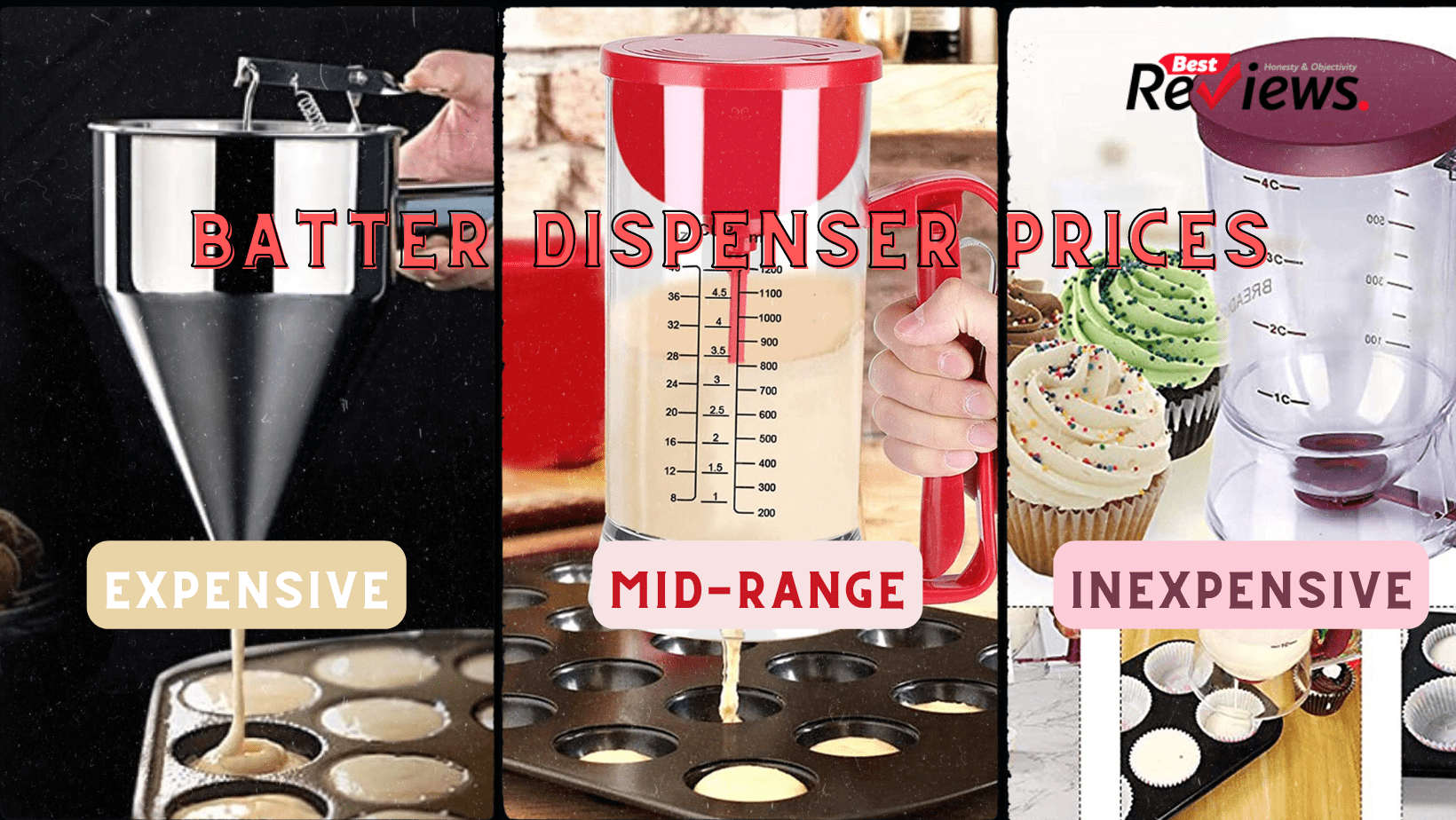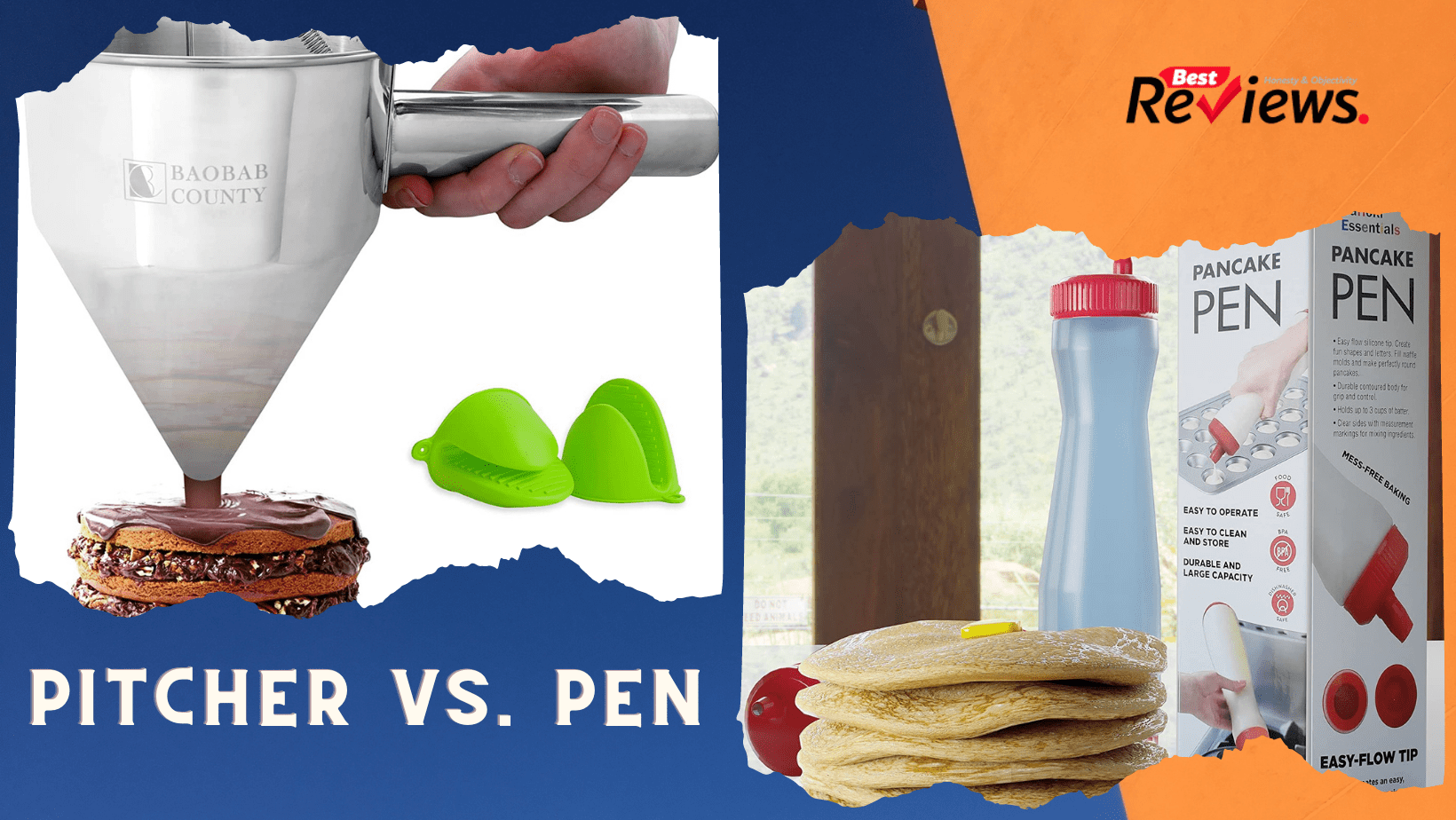Baking is a delightful way to make lasting family memories, but tasks requiring batter may be stressful in a variety of ways. Transferring cupcake batter from the bowl to the cup often results in a drip trail across the counter. In the pan, uneven pancakes burn. And cleaning up may rapidly become a chore. Many typical baking problems may be alleviated by using a batter dispenser, allowing you to return to enjoying your activity.
Batter dispensers are containers that carry batter and include a spout for equal distribution. They enable you to avoid the dirty process of transferring batter from the bowl to the skillet and produce consistent pancakes for even cooking.
However, not all baking endeavors are created equal. Which dispenser will keep your batter – and your morning – on track?
KEY CONSIDERATIONS
Thin vs. thick spout
Thin flapjacks are a family favorite in certain households. Fluffy blueberry pancakes are constantly on the menu in others. In any case, the spout of your dispenser is important to your success. Most dispensers feature a large loading slot at the top and a spout at the bottom for pouring batter.
Thin: A dispenser with a narrower spout is a better alternative if you usually use commercial mixtures. Commercial mixtures are often thinner and lack huge chunks of candy or fruit that might clog the flow. The thin batter may be more difficult to manage when it comes out of a larger aperture.
Thick: Even before adding fruit or chocolate chips, the thicker homemade batter might choke thin spouts. Some dispensers include an adjustable spout, which allows you to keep your choices open.
Material: Consider the spout’s subshttps://amzn.to/3AiTTjctance when inspecting it. Spouts are often made of silicone, plastic, or metal. Plastic is the least costly, but it may melt if it comes into contact with a hot griddle. Metal spouts may also harm nonstick surfaces if they come into contact with them. Silicone is a superior option since it has a high melting point and will not harm nonstick cookware.
Pitcher vs. pen
Pitcher: The majority of batter dispensers resemble classic pitchers. Pitcher dispensers are the best option for the majority of batter projects. Most pitchers come with a squeeze trigger, which is better suited to lengthier chores like creating conventional pancakes or filling cupcake tins. They’re also more sturdy and should last longer.
Pen: Some batter dispensers are designed like tubes and dispense like pens. This technique allows you to draw hearts, lines, and other freehand motifs with more precision while crafting bespoke pancakes and other delicacies. Because you must squeeze the tube to assist pour the batter, they are often constructed of softer materials. If pancake breakfasts are a family event, this sort of dispenser is more suited to little hands.
EXPERT TIP
Size
The dispenser size isn’t a problem for a quick weekend breakfast. However, if you’re feeding a swarm of teenagers or creating cupcakes for a party, you’ll need a dispenser that can carry at least a whole cake mix, which typically yields four to six cups of batter. Most pitcher-style dispensers have a four-cup capacity, whereas tube-shaped devices have a smaller capacity.
Materials
The vast majority of batter dispensers are composed of plastic, glass, or stainless steel. Plastic containers are the cheapest, but you may have to hand-wash them, which may be a deal-breaker for some. If you need a dishwasher-safe container, search for goods made of glass or stainless steel. Even some glass containers have detachable pieces that must be hand-washed. Dispensers made of stainless steel are often dishwasher safe, however, they may be more costly than dispensers made of other materials.
EXPERT TIP
BATTER DISPENSER FEATURES
All-in-one mixing
Some variants allow you to mix the batter directly in the dispenser, either by removing the top and inserting a whisk or by utilizing a device within the dispenser. Mixing your ingredients in the dispenser saves you from washing additional dishes and cleaning up the batter spills on the counter. However, although this form of the dispenser is handy, it is suitable for small quantities of thin batter since it cannot match the volume or power of standard mixers.
Markings
Many dispensers are designed with measuring marks on the side. This is useful if your dispenser supports onboard mixing or if you just want to know how much Batter is left in the container. It also saves you time from having to wash multiple measuring cups.
Handle
It’s one thing to make enough batter for morning pancakes. It’s quite another to squeeze out four cups of cake batter. If you make cupcakes often, opt for a batter dispenser with ergonomic handles that won’t strain your hands while preparing for big crowds.
Stand
Tubular and cylindrical dispensers often cannot stand on their own, at least not without spilling. Many different dispenser forms have supports to prevent tipping and spillage. This function assists you in reducing countertop spillage.
Drip tray
Some dispensers have a cover that also serves as a drip tray and fits under the nozzle. This helps to keep things off the counter, but it exposes your pitcher to spillage.
Valve
A detachable dispenser valve might make cleaning easier.
EXPERT TIP
BATTER DISPENSER PRICES

Inexpensive
For less than $15, you can locate affordable batter dispensers that will do the job. Dispensers at this price point are often constructed of plastic and function well with a thin batter. Expect these to be unable to handle additions such as blueberries or chocolates. Hand-washing is recommended for objects of this caliber.
Mid-range
These batter dispensers range in price from $15 to $40. Dispensers in this category are made of glass or plastic. Some people can handle thick homemade batter just well, while others may struggle. Many of these dispensers have enhancements such as whisk balls, measurement lines, or other value-added features that distinguish them from less costly ones. For washing instructions, please read the instructions.
Expensive
The best batter dispensers cost at least $15, and semi-professional machines might cost considerably more. At this price, the dispensers are often constructed of glass, aluminum, or stainless steel and are dishwasher safe, but double-check before investing in a higher-priced dispenser. These should be capable of handling thick batter and may have customizable settings for thin and thick recipes.
DID YOU KNOW?
TIPS
- Use your dispenser for more than batter. Carbohydrate restriction? You can create quick egg cups using your batter dispenser! Simply fill cupcake liners with chopped vegetables and meat and use the dispenser to add the eggs neatly.
- Watch for the bubbles. When you see bubbles develop and burst in the uncooked top of the batter, it’s time to turn it. The pancakes just need to cook for a minute or two on the other side.
- Don’t overfill the cupcake pan. Three tablespoons of batter yield a nicely sized cupcake.
FAQ
Q. Can I store my pancake batter in the refrigerator overnight in a dispenser?
A. It is not something we endorse. Slow dispensing seems to be a frequent complaint across all brands and models. Because chilling liquids delays their pouring, refrigerating batter overnight may actually increase your cooking time, particularly if the batter becomes caught in the spout. If you’re short on time, combine your dry ingredients ahead of time and store them in a covered jar on the counter. Then, in the morning, add your liquids so that at least the dry ingredients and your container are at room temperature.
Q. My crepe recipe requires me to chill the batter. Is this a problem?
A. Crepes are an exception. Because crepe batter is significantly thinner than pancake batter – even the thickest crepes resemble a substantial tortilla – the cooled batter should not halt your breakfast preparation. Many crepe recipes recommend stirring your chilled batter a few times before frying to see if anything has set too much. Remember that cooled crepe batter will still dispense more slowly than unchilled crepe batter. Cooking should not be rushed by increasing the heat. Because of the thin batter, they are prone to burning at higher temperatures.
Q. How full should I fill my cupcake liners?
A. Cupcakes are difficult to make. If you use too little batter, you’ll get a little treat. Too much and the cup overflows, resulting in a sticky mess and an unappealing appearance. Most recipes work best with cups that are two-thirds to three-quarters full. When in doubt, shoot low. You can always add additional icing to make a short cupcake seem taller, but there is no quick repair for spilled cupcakes.



















